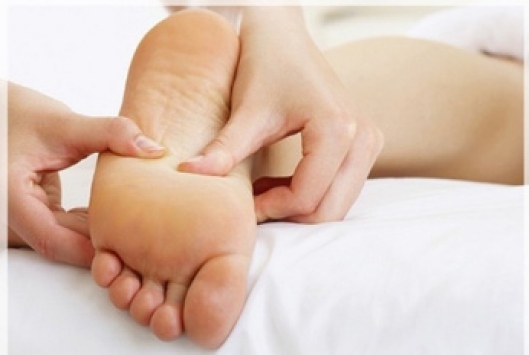
Restless Legs Syndrome, which manifests itself with leg pain, cramps, tingling, itching and burning, triggers depression when left untreated. Restless legs syndrome (RLS) is a common component of leg pain. It does not mean a single inconvenience. Many diseases can cause discomfort in the legs. The leg pain seen in restless legs syndrome is usually in the form of pain that is relieved by moving the legs, and that occurs at rest. It usually bothers people more at the end of the day and at midnight. Diabetes (diabetes), pregnancy, hypothyroidism (underactive thyroid gland), heavy metal toxins, polyneuropathy (multiple nerve pain, nerve inflammation), some hormonal diseases, anemia and iron deficiency, smoking, caffeine, alcohol, kidney failure (may be associated with vitamin and mineral deficiency), poor blood circulation in the legs (such as varicose veins), some drugs (especially antidepressants, gastric protective drugs) are thought to cause restless legs syndrome.
The symptoms of restless legs syndrome are: leg pain, cramps, tingling, itching and burning. When restless legs syndrome gets worse or becomes more frequent, it typically causes insomnia at night. Because of insomnia, children and some adults can be very sleepy, restless and aggressive during daylight hours. Restless legs are more common in women. Restless legs syndrome usually starts slowly. Increasingly, it can cause a real damage to your peace of mind. Over time, the legs become more affected. Less frequently, restless legs syndrome can also affect the arms.
In order to diagnose restless legs syndrome in adults or children, the following symptoms must be present. The urge to move the legs. This urge often causes unpleasant restless sensations in the legs. When the urges to move and restlessness are strong, the arms can be involved. Patients sometimes state that their legs move constantly, even during sleep. Some patients say that their legs work like pain machines at night, compressing their flesh. Sometimes they state that they feel as if ants are walking on their feet and they have very disturbing complaints. The tingling, pain, cramps, and burning sensations that begin or worsen when you are inactive are usually worsened by sitting or lying down and resting, but are relieved by taking action, especially walking. Restless leg pain is a type of pain that does not like rest. The pain that worsens at night is reflected in daily life as well.
A relaxing bath soak is recommended to relax the muscles in sore legs and reduce pain. Some patients get relief from hot while some cold, icy treatments. It varies from person to person. Adding lavender to bath water, roses, daisies, and eucalyptus are herbs that have soothing, relaxing effects. Adding bentonite clay to bath water is extremely beneficial.
Smoking nicotine is a stimulant that affects the nervous system. Avoid all forms of nicotine, including cigarettes, cigars and hookah tobacco.
Many drugs are used in the treatment of restless legs syndrome. However, almost all of them have side effects. Even antidepressants can cause increased symptoms. The main drugs are drugs used in Parkinson's disease and strong painkillers, and only experts decide to use these drugs. We will try to help you more about what you will do and how to plan your life. Anxiety can increase or trigger RLS symptoms. Using lavender scent and soap is good for patients. If the restless legs syndrome cannot be cured completely, it is still necessary to take measures to reduce the complaints.
There are many conditions that can mimic restless legs syndrome: Parkinson's disease, fibromyalgia, muscle diseases, joint diseases, peripheral neuropathy caused by Diabetes (diabetic neuropathy) and nervous disorders such as circulatory disorders. Restless legs syndrome in children is also often misdiagnosed as “growing pains”. Restless legs syndrome develops more frequently in those with sleep disorders, especially in women with sleep disorders.
Restless legs syndrome is a common disorder in pregnant women and is more common from the 5th month of pregnancy. Many drugs are objectionable for treatment, it is appropriate to eliminate predisposing factors such as caffeine, hot compresses, massage and exercise, and to apply alternative methods as treatment.
The golden rule in the treatment of restless legs syndrome should be the treatment of a known underlying disease. For example: If there is anemia, it should be treated. If there is varicose, varicose veins should be treated. Applying ozone oil (wellozone) to the feet every evening provides incredible benefits. Ozone is the form of active oxygen impregnated with olive oil. It eliminates most of the restless leg complaints such as cramps, pain, tingling and burning in the feet. We especially recommend using this most natural substance, rather than using drugs with side effects. However, quitting smoking, reducing caffeine, losing weight for obese people, walking and avoiding stress are the best options.
Caffeine triggers RLS, so it's best to eliminate caffeine from your life. Caffeine can give you a temporary boost of energy when you need it, but if you have this disease, it can do more harm than good. Caffeine is found in coffee. Hidden sources of caffeine: Tea, cola and some soft drinks, energy drinks, chocolate, certain flavored liquids prepared for weight loss and electronic cigarettes.
Practice stress reduction techniques. It is a pleasant way to meditate and listen to soothing music. Sleep experts say it's not a good idea to have a TV in the bedroom, especially if you have sleep problems. The bed should only be used for sleep or sexual intercourse. Blue Light is Bad and disrupts sleep-promoting hormones. Herbal teas such as chamomile, lemon balm, and passionflower can help you relax and fall asleep. A cup of warm milk every night before bed is calming and will give you the natural tryptophan boost to fall asleep.